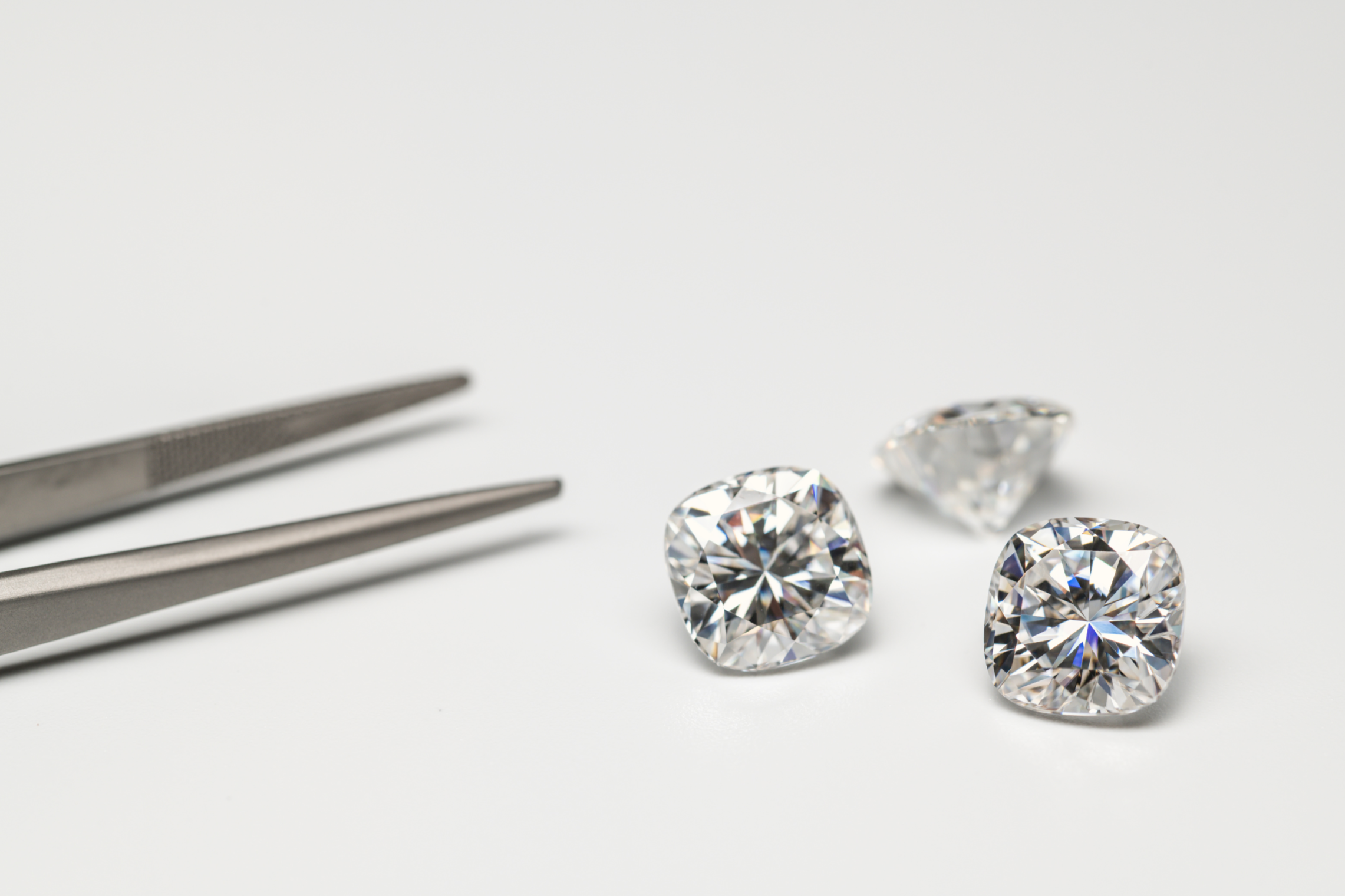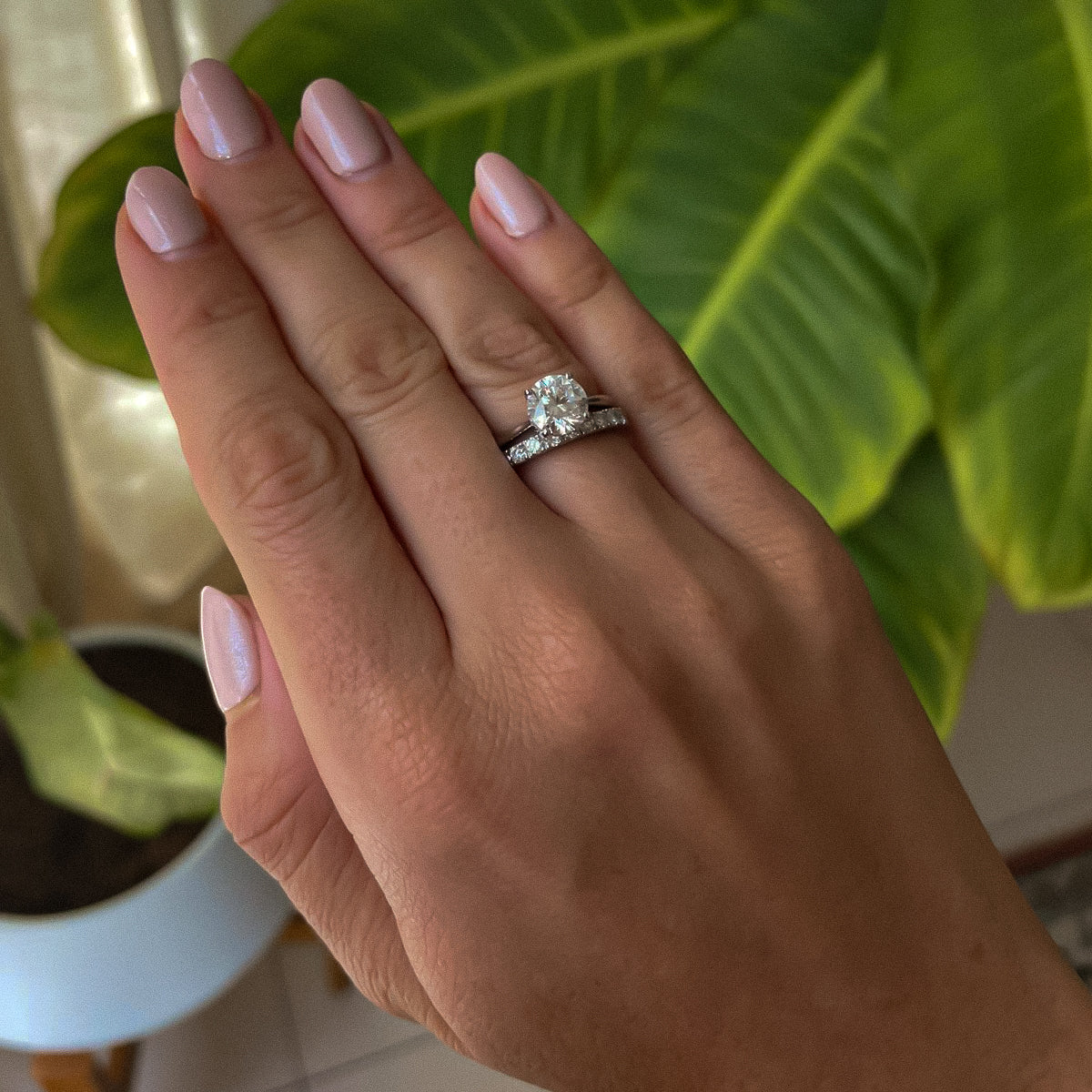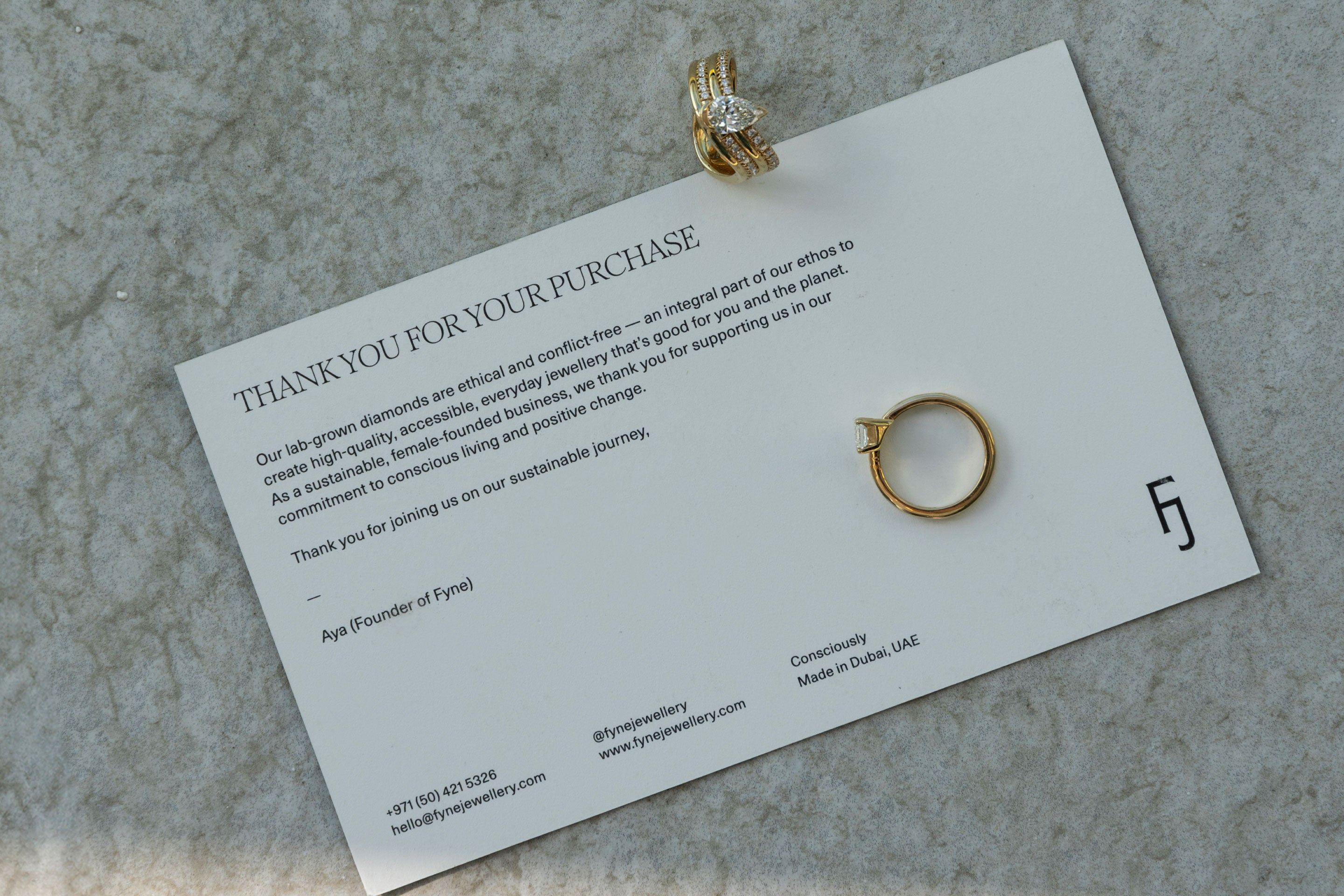Lab-grown diamonds are rapidly becoming popular among jewellery buyers worldwide. As a sustainable-first business, Fyne is paving the way by using traceable lab-grown diamonds in all of our jewellery and is proud to hold the accolade of being the first jewellery brand in the Middle East to use lab-grown diamonds.
You may have heard the terms CVD and HPHT diamonds used in discussions of lab diamonds and wondered what they mean. Here’s a little bit more about lab diamonds, why we choose to use them and the differences between the processes used to create them.
What are Lab-Grown Diamonds?
Lab-grown diamonds are authentic diamonds that are visually and chemically identical to their naturally-grown counterparts. The difference is in the process; lab-grown diamonds are created in a controlled laboratory setting that chemically mimics the conditions of the earth in which diamonds are formed.
Why choose lab-grown diamonds?
One of the reasons lab-grown diamonds are a great choice is that, due to artificial processes, they take a fraction of the amount of time that diamonds take to form naturally. Additionally, there is a finite amount of natural diamonds on earth, whilst there’s no limit to the amount of lab-grown diamonds that can be created. Due to these factors, lab-grown diamonds are usually priced lower than earth-mined diamonds while holding identical qualities. Both CVD diamonds and HPHT diamonds are forms of lab-grown diamonds.
We use lab-grown diamonds in all of our jewellery, making ethical and sustainable pieces, including engagement rings and wedding rings.
The environmental impact of choosing lab-grown diamonds over natural diamonds is significant and shouldn’t be understated. Natural diamonds cause the displacement of land and wildlife and have often involved human exploitation in their dark and complex history. By using lab-grown diamonds, we’re choosing an option that aligns with our ethos without causing harm to the planet and its people — because beauty shouldn’t have to cost the earth.
How are lab-grown diamonds made?
There are two primary methods for creating diamonds in the lab: CVD (Chemical Vapour Deposition diamonds) and HPHT (High Pressure, High Temperature). To learn about the differences, dive into the information below!
Understanding CVD Diamonds
What is the meaning of a CVD diamond?
A CVD diamond is a diamond created using a process known as Chemical Vapour Deposition. This happens in a laboratory setting, meaning all diamonds classed as CVD diamonds are lab-grown.
So, what is a CVD diamond? The CVD diamond process is very specific and has been perfected over many decades. In a specialised laboratory, a diamond ‘seed’ is chosen and placed securely in a sealed chamber. The chamber is heated up and pumped with gases, which ionise and break down into pure carbon. Temperatures within the chamber typically reach around 800 degrees Celsius. The carbon molecules within the chamber then attach to the diamond seed, eventually forming a diamond.
The speed at which CVD diamonds are grown is extremely rapid compared to other lab methods (and significantly faster than natural processes, which can take billions of years!). A lab-grown diamond using CVD methods can produce a 1-carat diamond in under a month.
Due to the speed of the CVD diamond process, which has many advantages in terms of efficiency of production, CVD diamonds are more likely to form with imperfections. However, to the naked eye, or even under a microscope, a CVD diamond can be very difficult to distinguish from a naturally formed diamond. With specialist equipment, a gemologist can identify a Chemical Vapour Deposition diamond by detecting tiny traces of silicone used in the CVD diamond process.
Understanding HPHT Diamonds
Like CVD diamonds, HPHT diamonds are also created in a laboratory, with the acronym standing for High Pressure, High Temperature. The processes are relatively similar in that in HPHT, the diamond also starts from a diamond ‘seed’, which is placed into a high-temperature environment along with pure carbon.
HPHT diamonds go through a three-step process: the belt press, cubic press, and split-sphere press. The pressure created from these high-intensity processes forces the carbon to melt around the diamond seed, resulting in the formation of a rough diamond.
In terms of time, it can take between a few days and a few weeks to produce a diamond crystal, with a 1-carat diamond taking around two weeks to form.
HPHT can also be used as a colour treatment for natural diamonds by permanently enhancing the diamond’s colour. Like a CVD diamond, it requires an expert gemologist to distinguish an HPHT diamond from a natural one.
CVD vs HPHT: Key Differences
Both CVD and HPHT can produce ‘D’ coloured diamonds, which are considered the whitest and, therefore, most valuable on the diamond colour chart (one of the 4 Cs used to assess a diamond's value).
Here is where the differences can show: Chemical Vapour Deposition diamonds tend to produce better clarity than HPHT diamonds whereas HPHT diamonds tend to have consistently higher colour ratings.
It’s worth noting that, in terms of diamond clarity, both CVD diamonds and HPHT diamonds have the potential to be graded as flawless (FL) or very, very slight inclusion (VVS1/VVS2), meaning that lab-grown diamonds can be of the highest possible clarity rating. This goes to show that diamonds produced in the lab can rate as highly, or even higher, than their earth-mined equivalents.
Choosing Between CVD and HPHT Diamonds
CVD Diamond vs Natural Diamond: which should you choose?
Ultimately, the different processes in which the diamonds are made in the lab or grown in the earth aren’t important. The most crucial thing when choosing a diamond is that it’s perfect for you.
Many people now opt for CVD or HPHT lab-grown diamonds due to their reasonable price point and because they are the modern-day ethical choice. This, coupled with the fact that flawless diamonds can be made in the lab, explains the huge demand we’ve seen for lab-grown diamonds in recent years.
When choosing your diamond, remember to consider the 4Cs (cut, carat, clarity and colour), as these can vary greatly from diamond to diamond, regardless of the origin. Decide what’s most important for you and allocate a budget to help guide your decision. For a deeper dive into the different types of diamonds, check out our blog.
It’s also important to identify what type of diamond you buy, whether lab-grown, earth-mined, or CVD/HPHT diamonds. If you buy your diamonds from a reputable business or seller, the diamond should come complete with a certificate by a diamond expert or gemologist stating its origin and the processes involved. This way, you know the full history of your diamond and can ensure you’re getting the best value for your money.
With all this in mind, it’s important to remember that there isn’t a definitive answer to the best way of producing a CVD or HPHT lab-grown diamond. The end results can vary massively in the same way they do with fully-formed earth-mined diamonds. It’s useful to know and understand the process involved in creating your diamond, but beyond that, the decision comes down to personal choice and budget.
FAQs
Is a CVD diamond a real diamond?
Yes, a CVD diamond is classed as a real diamond. Although it’s created in a lab, it is chemically identical to an earth-mined diamond. The difference is that a CVD diamond can be created in a matter of weeks instead of the billions of years it takes for a natural diamond to form. CVD jewellery is still every bit as real as natural diamond jewellery.
Will CVD pass a diamond tester?
A diamond tester is used to tell if a diamond is real or fake. As a CVD lab-grown diamond is a real diamond, it will always pass the test.
Is CVD diamond a good investment?
CVD and HPHT diamonds are great value for the investment you put in. Often marked slightly lower in price than their natural equivalents, CVD diamonds are every bit as real, and some can be incredibly high in quality. For this reason, you can wear your CVD jewellery proudly, knowing it's an ethical and beautiful choice.
How long do CVD diamonds last?
CVD diamonds have the same lifespan as natural diamonds, and as diamonds are the hardest material on earth, they truly are forever.






